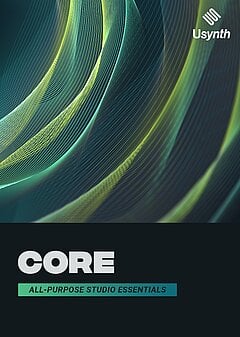How to Make a Bootleg Remix from Start to Finish
Stripping & chopping vocals, finding new chords, and building an arrangement that’s uniquely your own.
AUGUST 12TH, 2023
Establishing the basics
The very first step to create a bootleg remix is separating the vocals (or “a capella”) from the original song. Vocal Remover offers a straightforward, quick way to do this; no need to overthink it! Once you have your sample and you’re ready to build the remix around it, the first step in writing is to identify the key — there are plenty of plugins that can help with this, but the quick and dirty way is to loop a portion of the original song and play minor or major chords (depending on the tonality) and move them around the keyboard or piano roll until everything locks in with no dissonance.
If you prefer to identify the song structure first so you have something to “write towards”, you can drop markers in your DAW on specific measures to give yourself guidelines. You can largely copy the structure of the original song and add appropriate space for the drop, but try thinking outside of this structure and making something different! It’s your remix — you can arrange the song structure however you like.
Building the arrangement
To make the remixing process as smooth as possible, focus on stacking small wins that help the finished product come together piece by piece. Chords are a great place to start since they will directly support the vocals and instantly add more dimension to the song — play around with placing different chord progressions beneath the vocals, taking care to avoid the original chords as much as possible.
It’s important to take as many opportunities as possible to break away from the original song (while still making it sound good, of course); otherwise, listeners may as well stick with the original! Your chord choice is one of the easiest opportunities to express your own creativity, so don’t rush this! If you’re not a pianist and want a hand playing around with different chord ideas, Usynth offers the ability to lock everything you play to a major, minor, or pentatonic scale of your choice.
Once you have your chords, and you’ve played around with your synth and instrument choices until you’re happy, add in a bass part to support the arrangement and lock everything together harmonically; Usynth CORE has tons of bass presets to choose from spanning a wide variety of genres, making it a safe bet for most use cases. When in doubt, softer, rounder basses are better for supporting chords — plus, this will make your choice of bass sounds for the drop feel much more rewarding if you contrast softer basses with more aggressive ones.
Once you feel good about the overall sound, it’s time to add in some drums. The style you choose for the remix will usually dictate the type of drum groove you use, whether that means breakbeat, lofi, glitch, neo soul, whatever you feel is right! The articles linked in this paragraph will help you get started, but when in doubt, you can begin with a 4-to-the-floor beat and adjust the timing, frequency, and sample selection of each element in the drum kit (kick, snare, hi hat) until it meshes just right with the rest of the arrangement.
Vocal chopping
You can certainly choose not to chop the vocals at all, but with the prevalence of chopping in modern EDM, it’s worth giving it a try, at least in the drop. If you’re an Ableton user, you can open an instance of Simpler and drag the vocal sample in, though it helps to cut it up into smaller chunks so Simpler can pick up smaller slices for you to flip between. This is great for “playing” the vocal chops like an instrument, though you can also do all your edits and positioning manually if you prefer by chopping up the vocal directly in your DAW’s timeline. Listen for cool vowels and sounds you like and repitch them into a melody you like — using a real-time tuning plugin like Auto-Tune or MetaTune will help keep it all in key so you can experiment without constantly fighting the sample’s pitch.
Finisher DYNAMO is a great tool for adding movement to your vocal chops with tremolo, stutters, stereo image manipulation, and combinations of many different effects in one. This lets you cheat a bit by holding and manipulating a single sustained note rather than making a bunch of manual edits, or you can use both to add more variety to your vocal chops! If you want something a bit more “out there” that you can resample and cut up a second time, send a portion of the vocals through Finisher FLUXX to get a range of glitches and other wild effects you can splice, slice, and re-order to your heart’s content!
Copyright
Once your remix is finished and you’re ready to post it, there’s a critical step you must complete first — protecting yourself legally. It’s far beyond the scope of this article to cover this topic in its entirety, but for our purposes here there are 2 types of usage rights you need to know about: 1) permission to use the master recording directly, and 2) permission to use the underlying composition. In both cases, you’ll need to contact the rights holder and explicitly ask for the ability to use these copyrighted materials in your music ... and they can say no. That’s why it’s always preferable to clear the samples you use well in advance of completing your remix.
For a deeper understanding of this topic, this video provides a solid overview:
Wrapping up
Bootleg remixes are incredibly fun to make, but if it’s your first time (or you haven’t found a process that works for you yet), the idea of starting one can be daunting. Keep things simple to start — it’s often easier to experiment when you know the arrangement already works and you just want to spice things up a bit.
Once you’re comfortable with the process, there’s nothing you can’t do with the vocals ... or the arrangement as a whole. Make your remix your own, and deliberately depart from the original; when your true creativity and style shows through your remix and it sounds release-ready, that’s when you’ll know you’ve finally nailed it!
About the Author
Harry Lodes is a copywriter, marketing consultant and content writer for audio and ecommerce brands. He lives in the Philadelphia area, releasing Eastern/Western hybrid EDM under the artist name KAIRI hearkening back to his roots in Berklee College of Music.
Stay up to date
Sign up and we’ll send you an e-mail with product news and helpful stuff every now and then. You may unsubscribe at any time.
Defy Limits
We develop software solutions that enable people to create, consume and interact with music.




